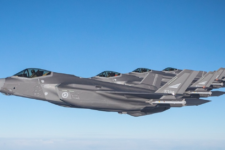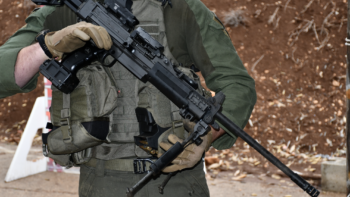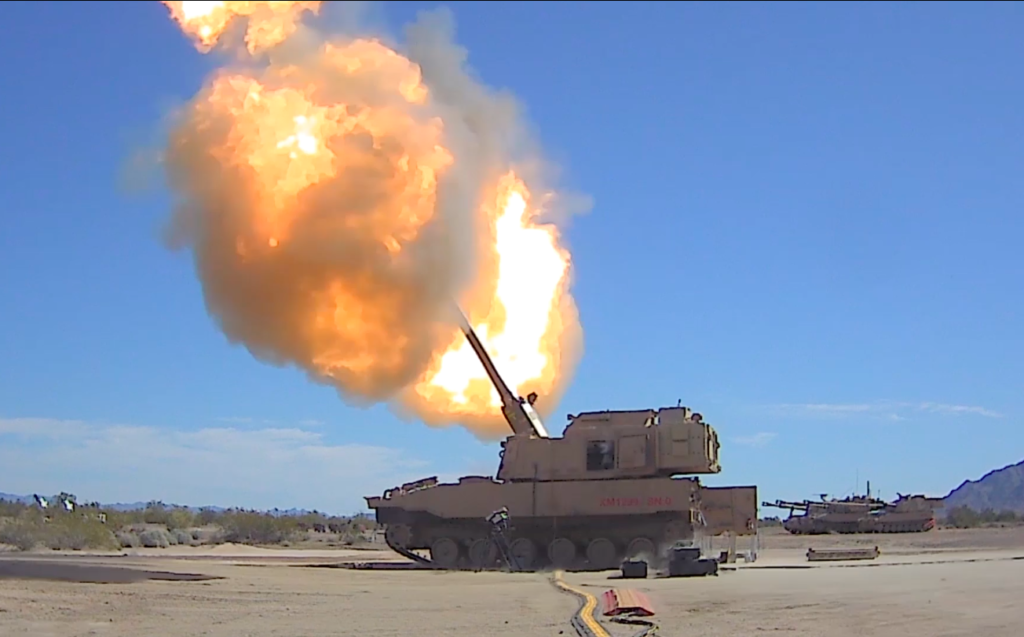
The Army’s 35 top-priority programs include the prototype M1299 armored howitzer, shown here during test-firing at Yuma Proving Ground on March 6, 2020.
WASHINGTON: The Army will fully fund “selected” high-priority weapons programs even if the defense budget is slashed, the service’s chief budget programmer said today. Lt. Gen. James Pasquarette didn’t specify what sacrifices the Army might offer up but he took pains to point out that, if you don’t cut modernization, you have to cut readiness or personnel instead.
My bet? The Army’s worked hard in recent years to restore the readiness of its combat brigades, an accomplishment that senior leaders are quick to boast of. Even under COVID, it’s worked hard to preserve major training exercises.
By contrast, the service has not increased the number of soldiers in the ranks even during the flush years of Trump budgets. That means we have a good sense of what the Army values, even if the incoming Biden Administration’s defense priorities are unclear.
So if Biden is forced to slash federal spending to pay down the debts incurred over COVID, expect Army leaders to offer reductions in endstrength as their first resort. Their argument, presumably, would be that, with most troops out of Afghanistan, Iraq, and Syria, the best way to deter Russia and China is with a smaller, highly ready and well-modernized force.

Lt. Gen. James Pasquarette, Army Deputy Chief of Staff (G-8)
No “Easy Button”
“Since the end of the Cold War, when the Army has been faced with a significant downturn in top line, the easy button has been modernization,” said Pasquarette, who coordinates long-range spending plans as the Army’s deputy chief of staff (G-8). “[We] turned down modernization… to preserve endstrength. Whatever was left over after that, we put into readiness.
“I believe it’s going to be different this time around, if and when we receive a significant topline reduction,” he told an Association of the US Army webcast. “The Secretary [Ryan McCarthy, who may leave in January – ed.] and the chief [Gen. James McConville, who won’t] have stated that we must modernize the Army. It’s a once-in-every-40-year opportunity” – since the Army last comprehensively overhauled its arsenal with the Big Five during the Reagan buildup – “and it’s against a valid requirement: Russia and China aren’t going anywhere.”
So what gets protected?
Since fall 2017, when Army Secretary Ryan McCarthy and then-Army Chief of Staff Mark Milley – now chairman of the Joint Chiefs – announced the service’s new modernization strategy, the service has focused on 30-odd “signature programs,” from hypersonic missiles to assault rifles. The number fluctuates a bit but currently stands at 35. 31 fall under Amy Futures Command and four under the Rapid Capabilities & Critical Technologies Office, which handles the most technically demanding programs: hypersonics, intermediate-range missiles, and lasers for air and missile defense.

Launch of Army-Navy Common-Hypersonic Glide Body (C-HGB) in Hawaii on March 19, 2020.
Over the last two budget cycles, the Army has cut or cancelled over 240 lower-priority programs and freed up almost $40 billion (spread over six years) so the 35 signature programs could have all they needed. Of that, $9 billion and 80 program cuts/cancellations are part of the 2021 budget package still being debated on Capitol Hill, even though the fiscal year began Oct. 1st. The government has been operating under stopgap Continuing Resolutions that puts 26 Amy programs in limbo, Pasquarette said, because they require either a new start or a funding increase, neither of which the CR allows.
The Army’s five-year spending plan for 2022-2026 cuts “dozens” more programs, Pasquarette said. Since that Program Objective Memorandum (POM) is still under review by the Secretary of Defense, he didn’t give specific figures or dollar amounts.
But he did say that, in addition to the 35 programs considered “Priority 1,” the Army is now systematically protecting “Priority 2” programs that are essential to those 35. For example, he said, since the new ERCA howitzer (which is one of the 35) will double the range of current cannon, out to 70 km, the Army must upgrade its Q-53 counterfire radar (which isn’t) to detect targets out to that distance as well.
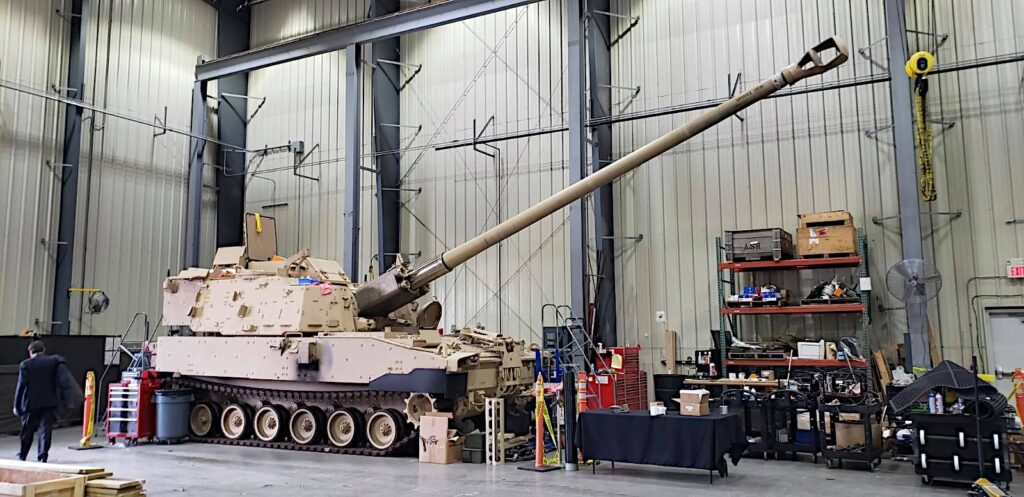
The prototype XM1299 Extended Range Cannon Artillery (ERCA) armored howitzer being assembled at Picatinny Arsenal, NJ.
That kind of linkage was occurring on a case-by-case basis in previous budgets but it was “scattershot,” Pasquarette said. In the 2022-2026 plan, however, it’ll be systematic.
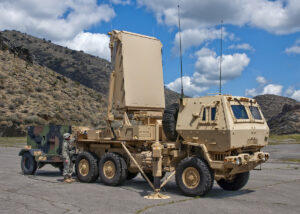
Truck-mounted AN/TPQ-53 radar.
However, that ’22-’26 plan doesn’t reflect the cuts that many believe are coming – including the majority of outside experts the Army consulted back in the spring, Pasquarette said. If the Army’s topline budget plummets, the question won’t be which programs outside the 35 “Priority Ones” to protect, but which of the 35 get to survive.
“I believe we’ll look at continuing to fully resource selected CFT efforts that are deemed especially critical, even under a significant topline reduction,” Pasquarette said, stressing the word “selected.” What is that list? “I’m gonna not share with it you, and I don’t even really know it myself.”
The chief of Army Future Command, Gen. Mike Murray, will play a crucial role in advising top Army leaders on what to cut and what to keep, a problem that Murray has already been wrestling with for months. “Gen. Murray will be intimately, personally involved if it gets to that,” Pasquarette said.
Out of INF, Army deploys Typhon weapon to the Philippines
“This is a significant step in our partnership with the Philippines, our oldest treaty ally in the region,” said Brig. Gen. Bernard Harrington, commanding general of the 1st MDTF.













